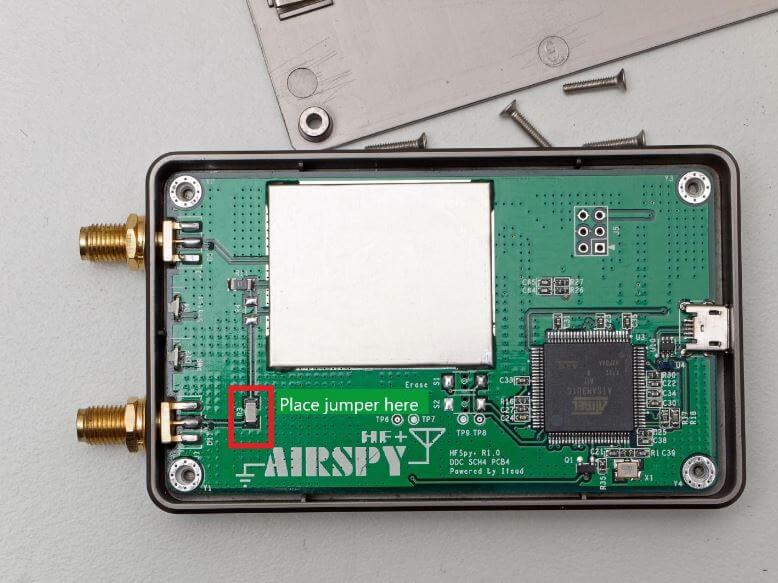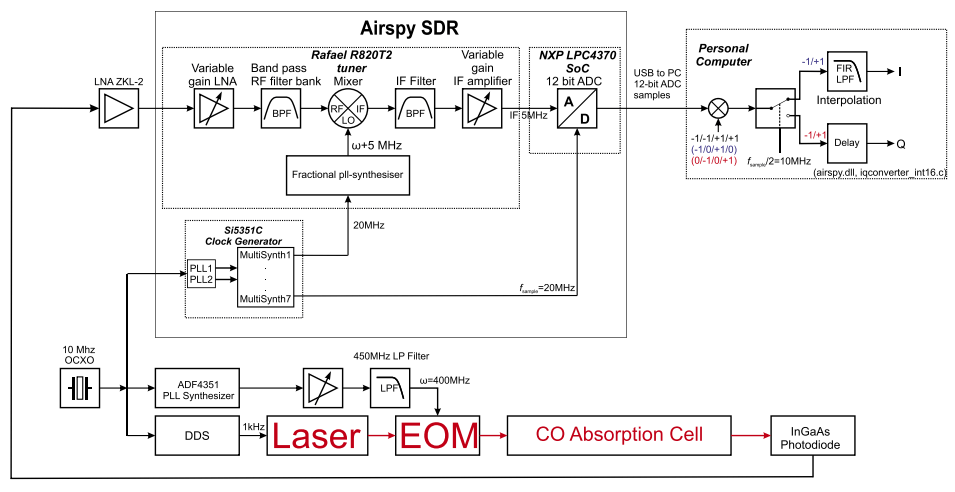R820T2 Chip Discontinued: Low Cost R820T2 RTL-SDRs will Continue, Airspy Will Redesign
The R820T2 is the main tuner chip used in most RTL-SDR dongles. Several months ago Rafael Micro ceased regular production of their R820T2 chip, and the older R820T has also been discontinued for some time too.
However, Rafael are still producing new quality R820T2 chips for factories if they make very large bulk orders. Since it is one Chinese manufacturer producing all of RTL-SDR.com V3, NooElec, FlightAware and most generically branded dongles, the volume restriction is not a problem for them as long as the RTL-SDR is still in demand. So most dongles using R820T2 RTL-SDRs should be able to continue business as usual for the forseeable future. But we have also recently seen that a lot of generically branded RTL-SDR dongles presumably produced at other factories have started to ship with the less desirable FC0012/13 tuner chips instead.
The R820T chip is already 8 years old, and the R820T2 has been around for the last two years. The R820T2 was a slight improvement on the R820T, due to a higher quality manufacturing process used to produce it. The change in manufacturing process resulted in mostly higher yields, less chip-to-chip variance, better sensitivity, reduced L-band heat VCO lock issues, and wider filters.
Recently the Youssef from the Airspy team announced the likely early retirement of their Airspy Mini and R2 line of products (see update below, Airspy Mini/R2 production will continue) These are SDRs that used the R820T2 tuner chip combined with a 12-bit ADC, allowing for significantly better performance compared to an RTL-SDR. It seems that they were able to acquire R820T2 chips from a distributor, but the stock proved to be very low yield. Possibly once discontinued a lot of low quality chips were dumped onto the distributors for final sale. They write:
I have some bad news. Rafael Micro officially discontinued the R820T2 since a few months. This is the tuner we use in the Airspy R2 and Airspy Mini.
We tried to secure an extra batch from Rafael (even at a higher price) but the quality of the silicon of the samples we received wasn't very good and most units didn't pass our automated QA tests. Sacrificing the performance is out of question. The alternatives proposed by Rafael are not pin compatible and require both a significant hardware redesign and new tuner control code - and this is a large investment with very little guarantees on the final result.
I can say this has been one of the longest running designs that resisted the new silicon tuner SDR's popping in and out while setting a standard for performance and price.
For now, our distributors are running out of R2/Mini's very quickly and, until a final solution is found or a new replacement is designed, there won't be any new batches out.
Youssef from Airspy also notes that he's beginning work on designing a new unit:
I was checking my notes for alternatives to the current Airspy R2/Mini design and wondered if consulting the community would give some constructive input. As the market is already crowded with low cost receivers and transceivers, but yet Icom manages to sell a 4 figures SDR, I was thinking of making something that is as open as possible for extensions and work good enough for the most demanding operators and pro's, all while being affordable.
The idea is to replace the R820T2 tuner with one of its latest high performance siblings, then replace the old LPC4370 with the brand new i.MX RT1020. This MCU can be interfaced with a good ADC and has enough processing power for oversampling and decimation through the Cortex M7 core, which will bring the final resolution higher.
The general goals:
- Better RX performance than the general purpose low cost silicon transceivers
- 12 bit RX at 10MHz bw and up to 16bit at narrow band
- Coverage from 30 MHz to 1.8 GHz or more
- Switched pre-selectors
- Open source
- Same form factor as the Airspy HF+ (same box actually)
- Leverage the RF manufacturing and testing capability developed at Itead Studio
- Affordable
UPDATE (May/2018): The Airspy team have managed to acquire a new batch of good R820T2 chips, so production of the R820T2 based Airspies can continue as per usual.
So in conclusion there is no need to panic buy R820T2 RTL-SDRs as production will continue as per normal for the forseeable future as the RTL-SDR demand is high enough for factories to make large bulk orders of new R820T2 chips. Even if the R820T2 is fully discontinued, there are alternative tuners with the same performance that we can switch to after a minor redesign.
Note that we're currently out of stock of RTL-SDR V3's on Amazon and low in stock on our store but this is not related to R820T2, but rather simply shipping delays. We should be fully back in stock within a few weeks.




